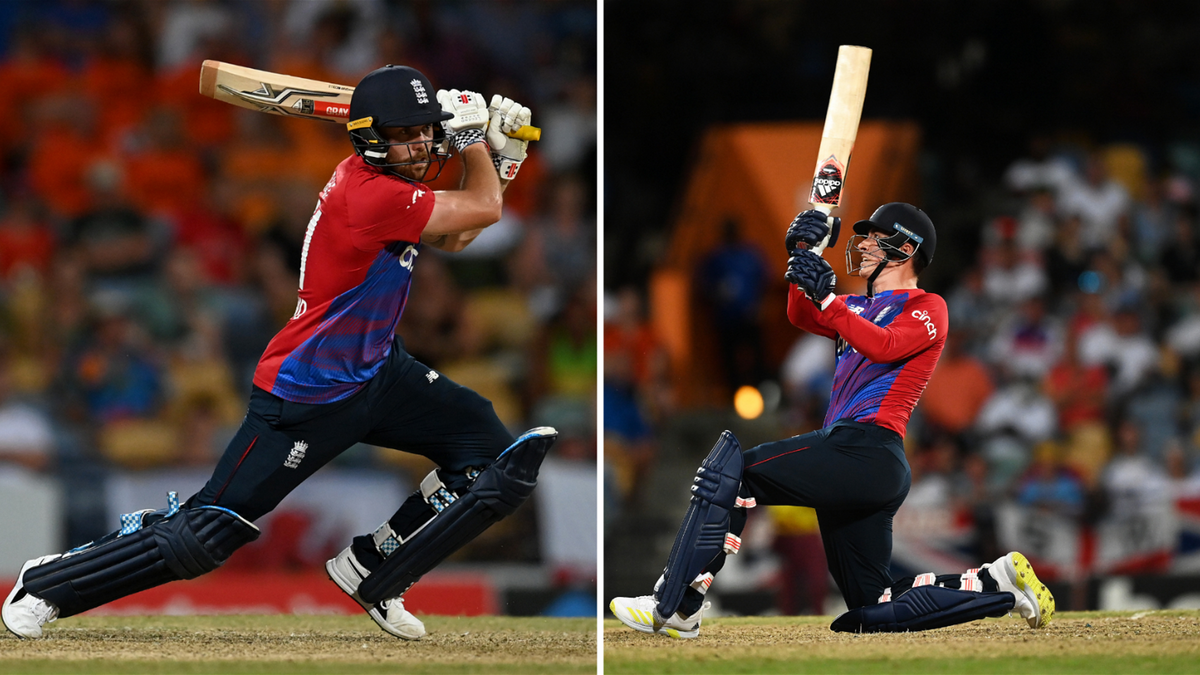
Over the past few years, England have distinguished themselves as a white-ball outfit. Post the debacle at the 2015 ICC Cricket World Cup, England have shed their batting conservatism and embraced a more firebrand approach – an approach that has fetched them extraordinary success.
Through that journey, England have made a point of identified their preferred personnel and backing them to the hilt. If pure averages are considered, the likes of Jason Roy, Eoin Morgan and Moeen Ali don’t leap off the page. Yet, each is valued for the fearless attitude they bring to the fore and the positive impact it has on others around them.
The insistence on sticking to a core group of players, though, has meant that a few of their youngsters haven’t been provided as many opportunities. Phil Salt and Tom Banton – batters who have regularly lit up franchise T20 leagues, are perhaps two of the unluckier English cricketers.
Not because they’ve not been playing for the national team enough. But because they have, courtesy of what their predecessors have achieved, massive shoes to fill. So far though, the series against the West Indies is proving that these youngsters have what it takes to sustain themselves in the international circuit. More importantly, they seem to be blessed with the kind of mindset that has become synonymous with England’s white-ball setup.
Since the start of 2019, Banton and Salt have played a lot of T20 cricket. Quite a bit of it has come in overseas leagues. Banton has enjoyed stints in the Big Bash League, the Indian Premier League and the Pakistan Super League. Salt, on the other hand, has represented the Adelaide Strikers, Barbados Tridents, Islamabad United and Lahore Qalandars.
Apart from the damage they are capable of inflicting, the quality that strikes out is the swiftness of their starts. Neither takes much time to settle at the crease and both transfer the pressure onto the opposition immediately. They largely ply their trade as openers, meaning that they optimize the field restrictions too.
Since the start of 2019 and before the series against the West Indies, Banton and Salt had magnificent statistics during the first 10 balls they faced. While they were susceptible to a soft dismissal or two, they ensured that their strike rate never dropped. In the aforementioned period, Banton struck at 133.69. Salt, meanwhile, blazed away at 149.3. Only four batters bettered Banton’s tally during this period – Chris Lynn (134.38), Quinton de Kock (135.35), Alex Hales (145.75) and Salt.
The numbers clearly indicate that Banton and Salt are as invaluable a commodity as any. Not just because their skill-set isn’t rivalled by many. But also because it takes plenty of conviction and courage to continue batting in the manner that they do – knowing full well that a string of failures could lead to exclusion from their respective teams.
Even during the current series, Banton and Salt have lived up to their reputations. In the second T20I, Banton made 13 off the first 10 balls he faced. He bettered that tally in the third game, notching up a corresponding score of 18. Salt, on the other hand, scored 17 runs off the first 10 balls he faced on his T20I debut at Barbados.
To an extent, this sort of approach works best because both are part of England’s white-ball ecosystem. They have proclaimed their love for high-risk cricket in the recent past. While it leaves them prone to the odd capitulation, the resources at their disposal, combined with the clarity of thought means that they succeed more often than not.
That provides the likes of Banton and Salt the requisite confidence to believe in England’s philosophy and adopt it completely. They know that their method and effort will be appreciated. And, they also understand that this is what English white-ball cricket stands for. Banton and Salt epitomize the white-ball revolution that has engulfed England. They are carefree stroke-makers, they throw caution to the wind, and they fail at times too. Most tellingly, though, they keep coming back for more.
The pair, much like their illustrious predecessors, acknowledge that failures will accrue along the way. But they also understand that the trade-off is worth its weight in gold.
At the moment, England’s Test fortunes aren’t great. There have been murmurs that the increased emphasis on white-ball cricket has contributed to it. So, a change in tack, wherein red-ball cricket is at the forefront again, could materialize soon. However, the likes of Jonny Bairstow, Jos Buttler, Moeen, Morgan and Roy aren’t going to be around forever either. A conglomeration of the golden generation of English white-ball cricketers will cease to exist at some point. But with Banton and Salt in the mix, they can sleep peacefully in the knowledge that when the baton needs to be passed, they can be snapped up by equally safe and explosive hands.
A couple of breakthrough T20I performances is usually not enough to guarantee young batters a prolonged run in the side. Yet, the resemblances to the established crop are uncanny. Banton and Salt are, in many ways, the perfect reflection of what England’s white-ball cricket is – fearless, firebrand, frenetic and full of entertainment.








